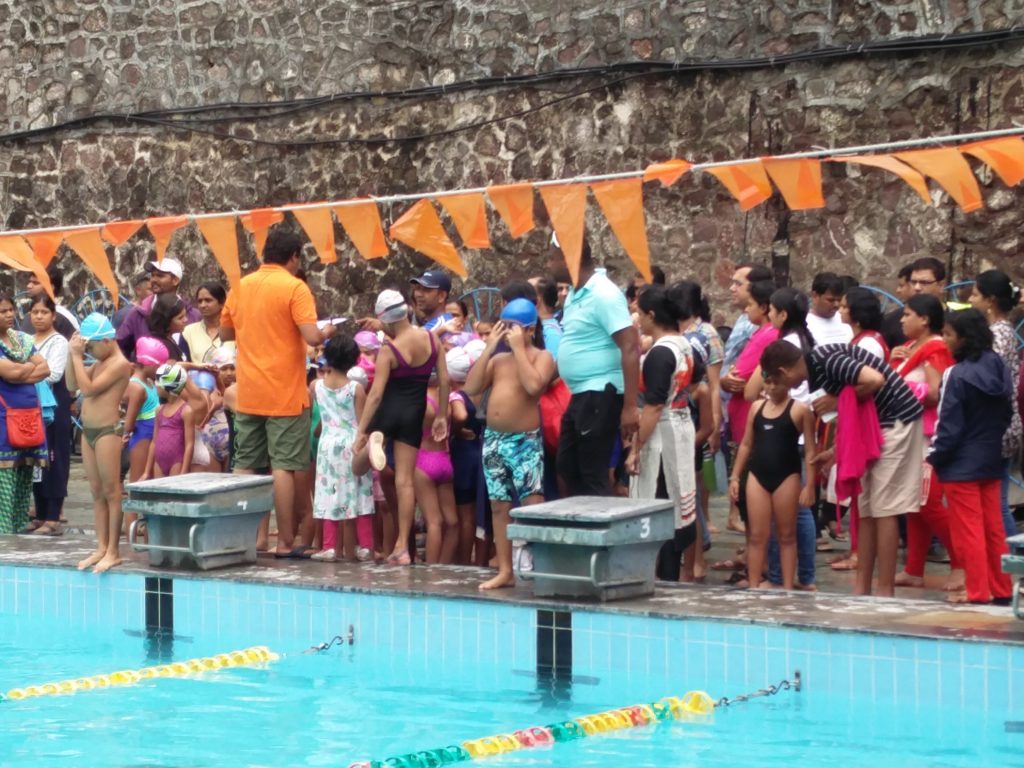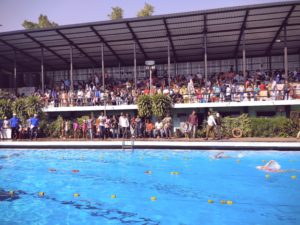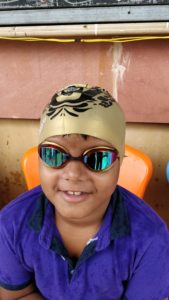Yet again, in another “Unlock” announced by the government, swimming pools have been left out. This was the third instance of the “Unlock” when various aspects of the economy were restarted. Gyms, malls, sports complexes, etc. have been allowed to open. Still, swimming pools continue to be disallowed much like cinema halls, entertainment parks, theatres, bars, and so on. Not surprisingly, Indian competitive swimmers who have been waiting many months for the pools to reopen are distraught. They have been let down by the government and the various swimming bodies that promised pools would be reopened.

For the past few weeks, elite swimmers like Virdhawal Khade, Srihari Nataraj and renowned coach Nihar Ameen have been beseeching the sports minister Kiren Rijjiju and the Ministry of Home Affairs (MHA) to pay attention to their plight. Numerous tweets have been posted tagging the Swimming Federation of India (SFI), MHA, the sports minister, imploring them to open up the pools for competitive training. India’s highest-ranked swimmer Virdhawal Khade has even gone to the extent of talking about retirement from the sports if there’s no headway. Their exhortations haven’t been answered, except with stoic silence. It’s almost like these swimmers have been banging their heads against the wall, or a better analogy would be they have been dumped in the Arabian Sea without a life jacket.
The predicament and the frustration of the Indian swimmers is quite understandable. It has been over four months since the pools have been closed, that is practically a third-of-the-year. For athletes, who typically spend anything from 4-6 hours in the water, perfecting their strokes, tumbles, catch, and so on, this extended break can be devastating both physically and psychologically. This is all the more so because they were eagerly preparing for the Tokyo 2020 Olympics (which will now be held in 2021). All the preparations, milestones, timelines have gone for a toss.
Qualifying for Olympics is a tough call, especially so in aquatics. The selection process is as follows; participating countries are allowed up to two qualified swimmers per individual event and one relay team. Each country is allowed a maximum of fifty-six swimmers (twenty-eight male and twenty-eight female). Though each country is free to select the swimmers, the International Olympic Committee (IOC) establishes a standard that must be met for a swimmer to be eligible to compete at the Olympic Games. The top swimming body, FINA publishes two sets of time-standards for each of the events: the “Olympic Qualifying Time” known as the “A-Time” and the “Olympic Selection Time” known as “B-Time.” Each country may enter up to two swimmers per event, provided both swimmers meet the qualifying time or A-Time. A country may enter one swimmer per event who meets the qualifying standard or B-Time. Any swimmer who meets the qualifying time will be entered in the event for the Games; a swimmer meeting the B-Time standard will be eligible for entry, and their entry will be allotted/filled in by ranking. A country that does not receive an allocation spot, but has at least one swimmer who meets a qualifying standard may enter the swimmer with the highest ranking. If a country has no swimmers meeting either qualifying standard, it may enter one male and one female in total.

Thus, B-Time qualification will only ensure an invitation to the Olympics if the total available quota slots (878) are not filled. So far, six Indian swimmers have attained the B-Time, Virdhawal with a timing of 22.44s in 50m freestyle. Sajan Prakash (1:58.45 in 200m butterfly), Srihari (54.69s in 100m backstroke), Kushagra Rawat (8:07.99 in 800m freestyle), Aryan Makhija (8:07.80 in 800m freestyle) and Advait Page (8:00.76 in 800m freestyle). Yet, these qualifications count for nothing as only an A-Time can get you the position in the Olympic swimming team. For Virdhawal the target is 22.01; 1:56:48 for Sajan and 53.85 for Srihari. Rawat, Page and Makhija have to clock 7:54:31.
The time difference between 22.01 and 22.44 might not seem much to a common man, but in swimming parlance, it is equivalent to an aeon, a difference between a life-time spent in celebration or in ignominy.

While Indian swimmers struggle to attain these qualifying times, the case is pretty different for a power-house like the US. To give an idea, till August 14, 2019, over 1000 swimmers had attained the qualifying times for different events in the US. To illustrate the high-level of competition, let’s take the 50 Freestyle male event, six swimmers had achieved the A-Time, the best being Caeleb Dressel with 21.04. Some 23 swimmers have attained the B-Time. Indeed, there were 23 swimmers between the timeline of 22.01 to 22.67. Now, the US team can send only two swimmers for this event. Thus, at the US trials, all these swimmers will have to battle out, and only the top two will get to wear the stars and stripes. All these A-Times and B-Times count for little when you are in the US.
And we are just talking about the US, other swimming powerhouses like Australia, Japan, China, UK, also have their robust selection processes that ensure that they will be sending their very best for the competition.
In contrast, no Indian swimmer has ever attained the A-Time for any Olympic events. That should give an idea of where we stand in the sport, globally. Basically, we are scraping at the bottom. Period!
But then swimming is a critical sport for any country wishing for Olympic glory. There are a total of 37 events in swimming discounting the other aquatic events like diving, etc. That’s a good 111 medals on offer; gold, silver and bronze. Even the union minister of sports Kiren Rijiju understands the importance of swimming, stating, “India will have to focus on aquatic sports, especially swimming if the country wants to excel in Olympic Games.”

The minister went on to add that, “Historically, the top countries in the Olympics have bagged a large number of medals in swimming. In the last five Olympics, the US won about 31 per cent of their total medals in swimming. There is a great opportunity for any country because of the sheer number of events that take place in aquatics. Today, we don’t stand anywhere in swimming at the Olympic level, but there is a huge potential in the sport if we act with dedication, proper planning and adequate resources.”
Simply put, if a country desires to be an Olympic power-house, it can’t without paying attention to aquatics, especially swimming events.
So, why are we failing badly? Why is it that a country of 1.3 Billion can’t find talent to attain an A-Time?
Continue reading

 different, it is an abiding passion that not only sucks in the sportsperson but also their folks, their parents.
different, it is an abiding passion that not only sucks in the sportsperson but also their folks, their parents. The good thing is that, once away from the pool, the Swim-Dad displays normal tendencies, but now and then, some mutations occur and the Swim-Dad is equally obsessive even in while sitting in the living room.
The good thing is that, once away from the pool, the Swim-Dad displays normal tendencies, but now and then, some mutations occur and the Swim-Dad is equally obsessive even in while sitting in the living room.